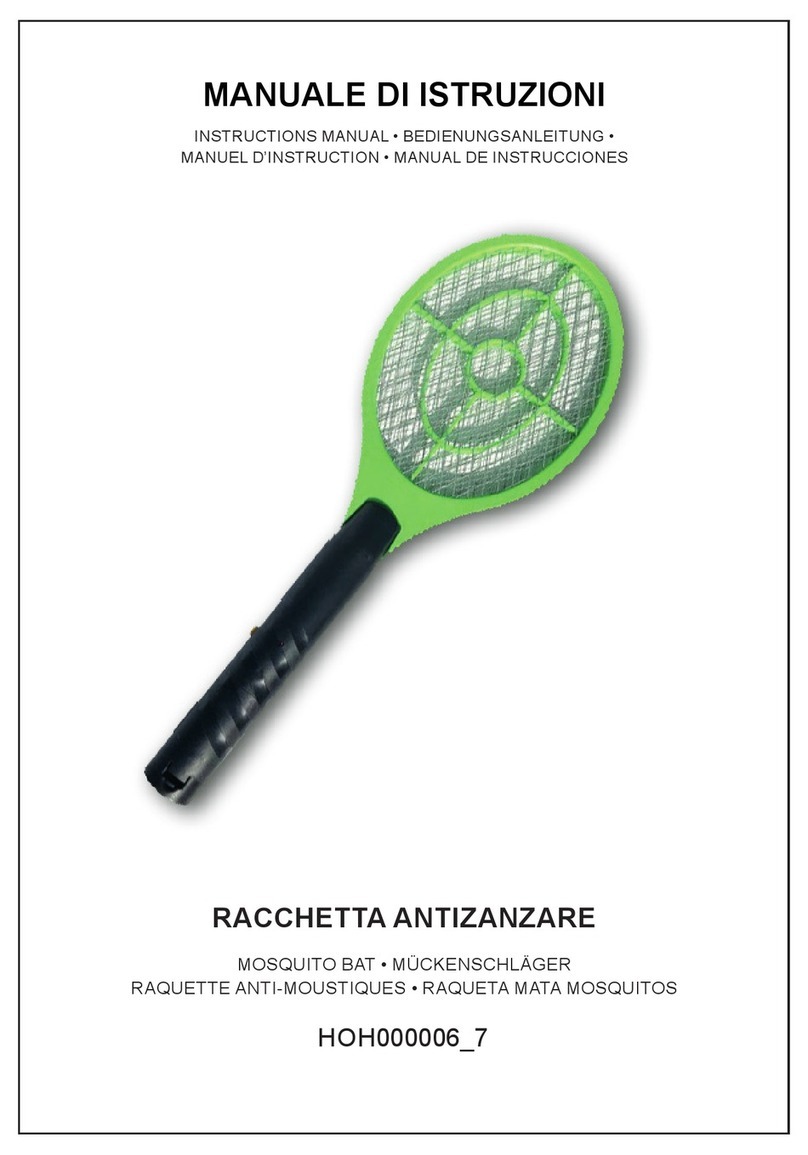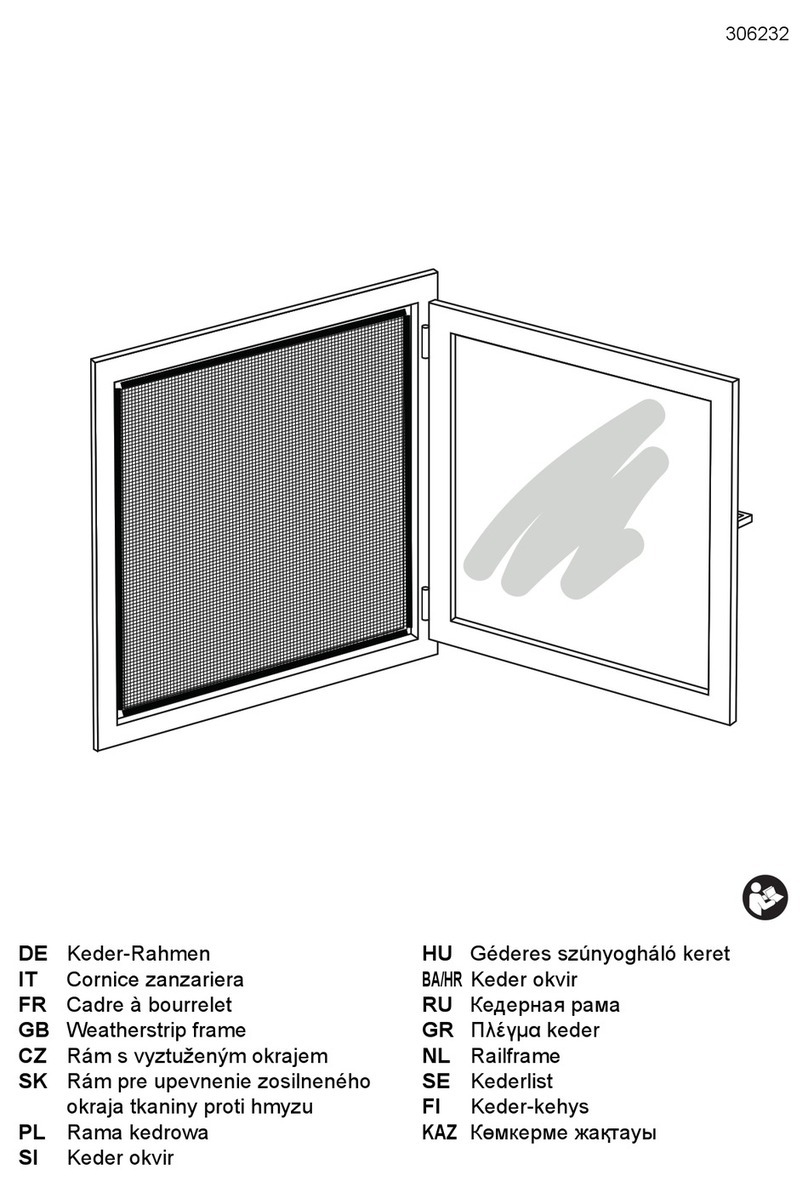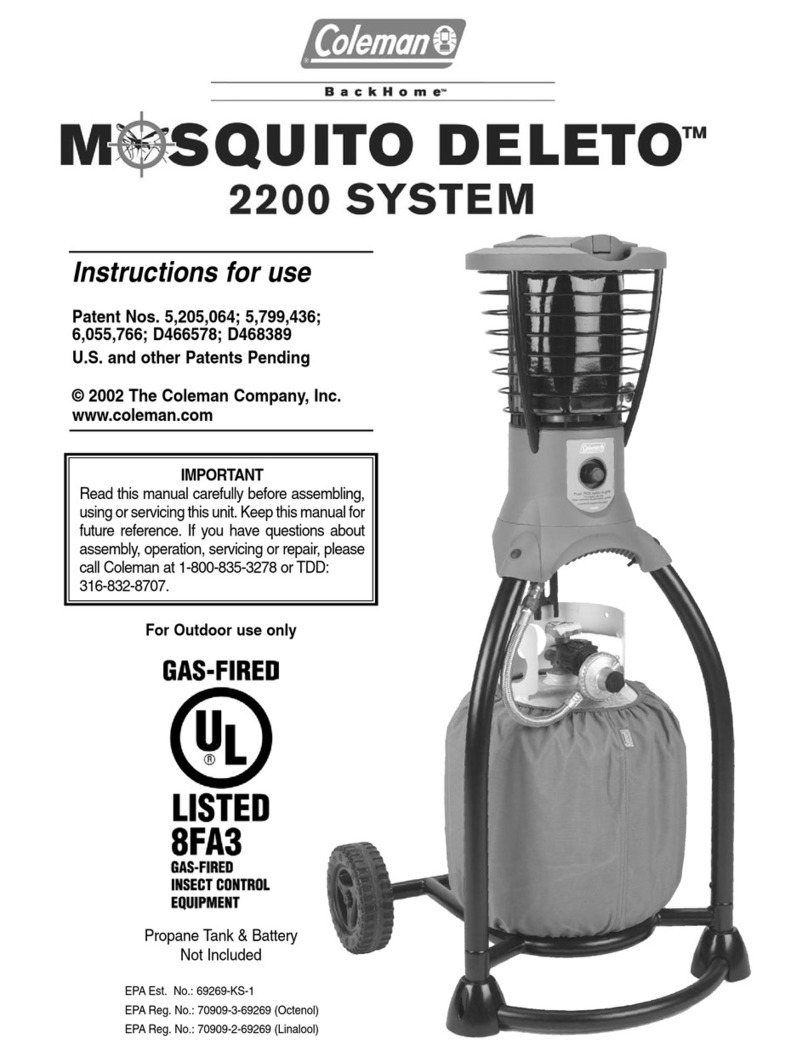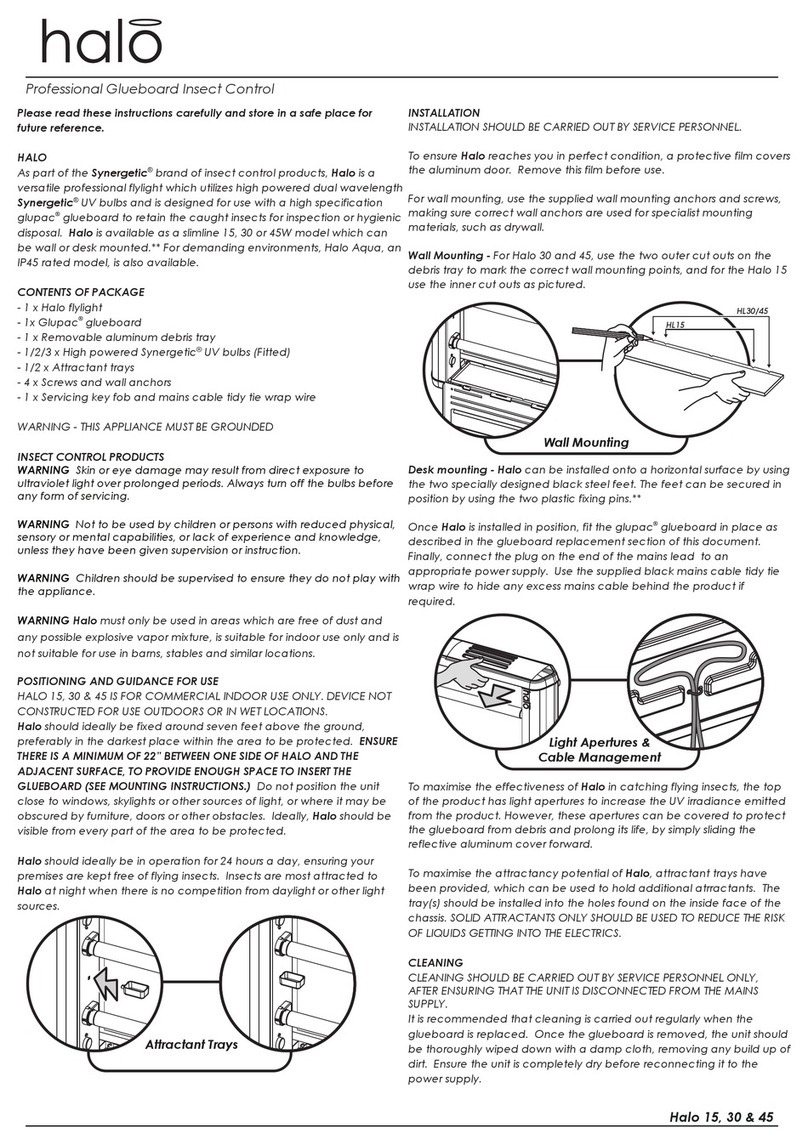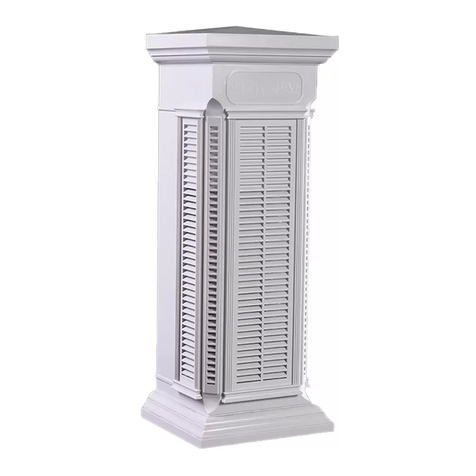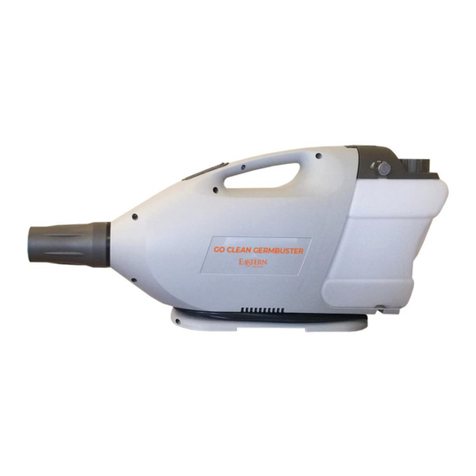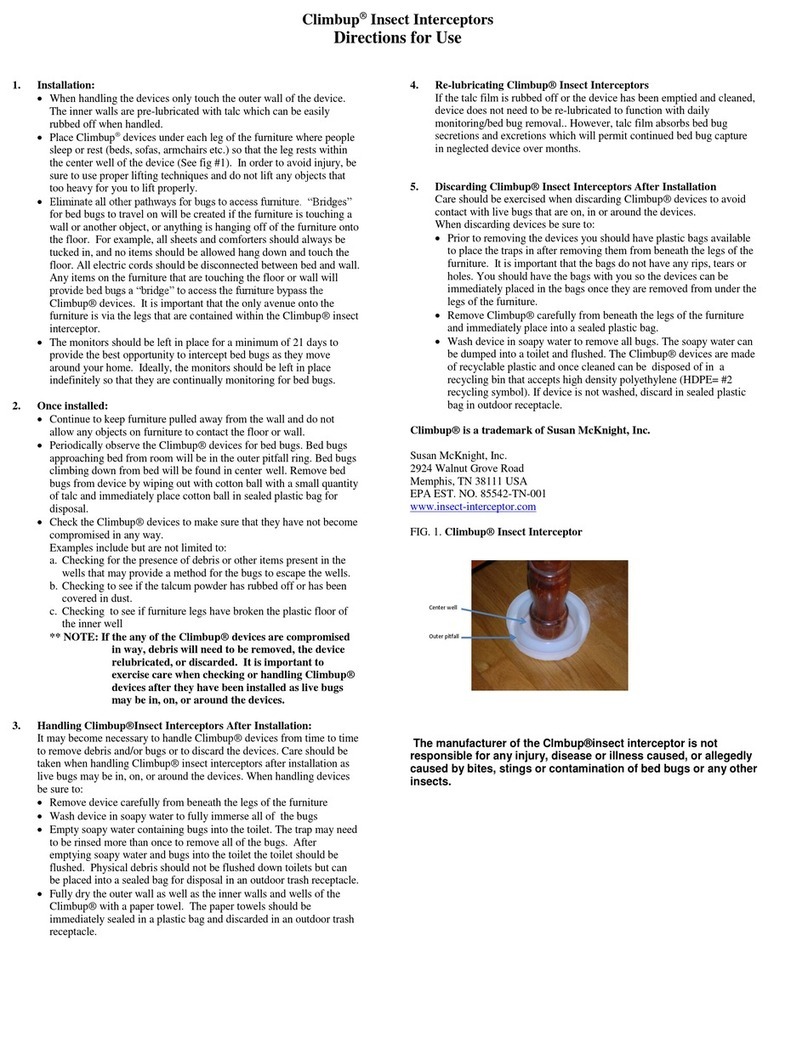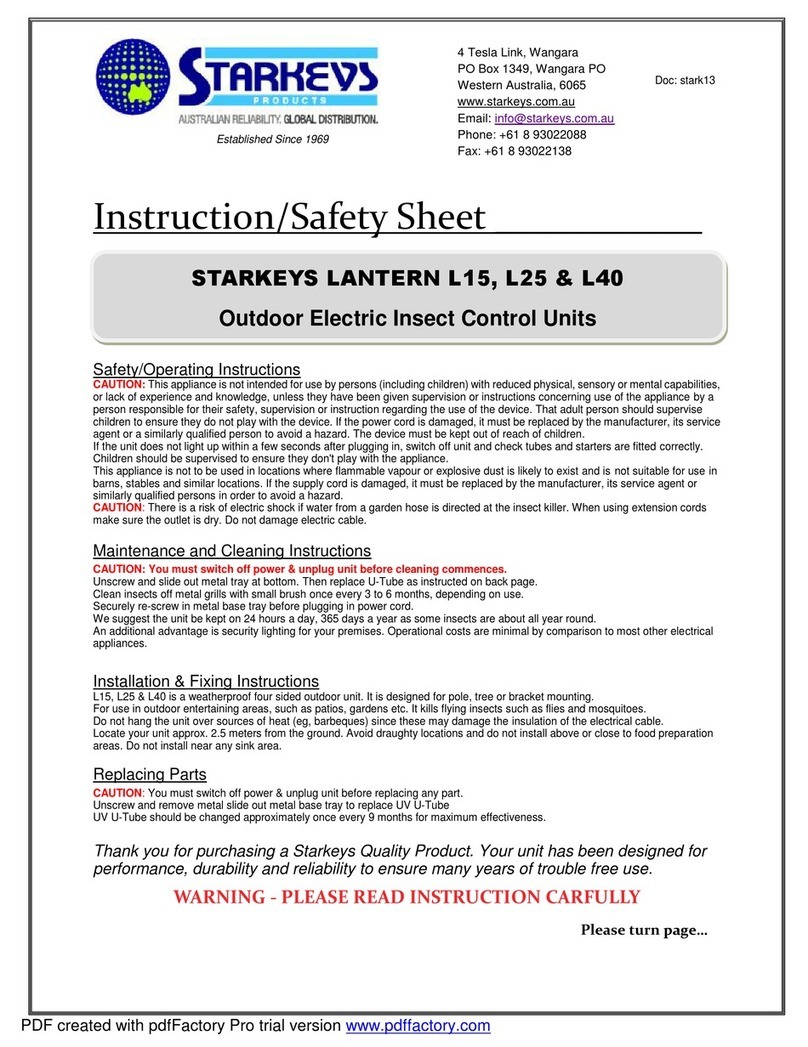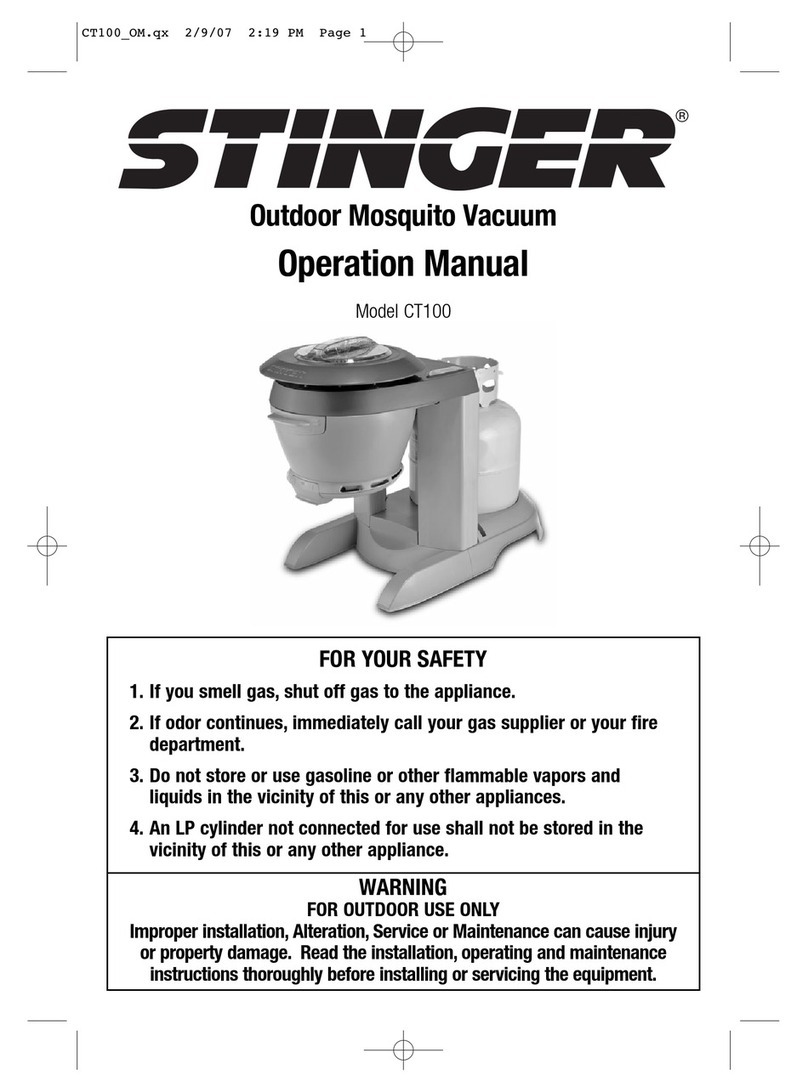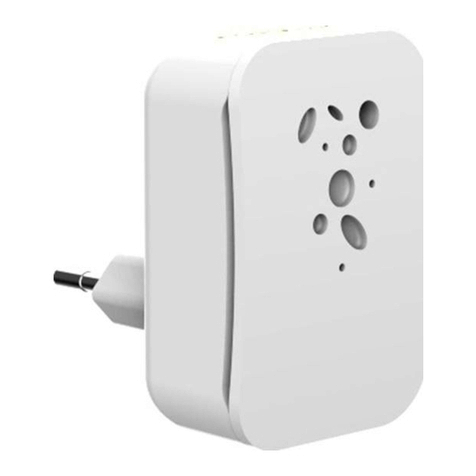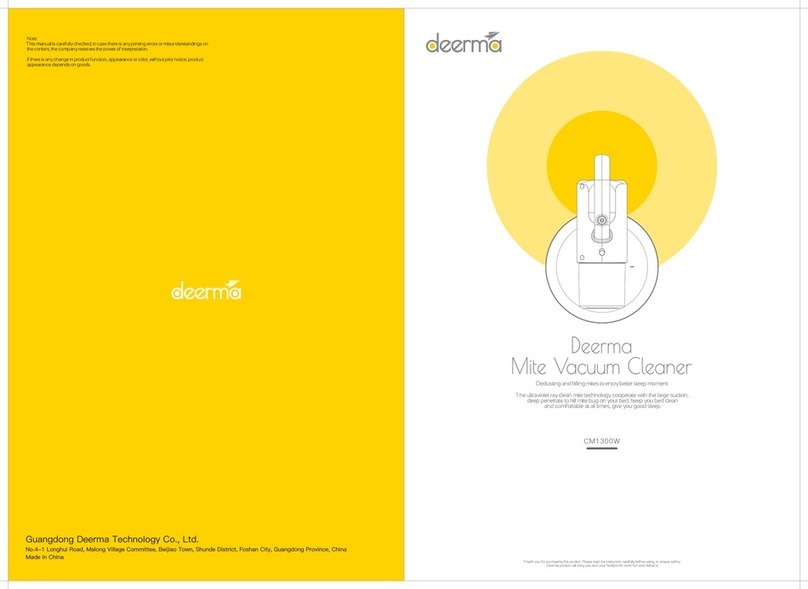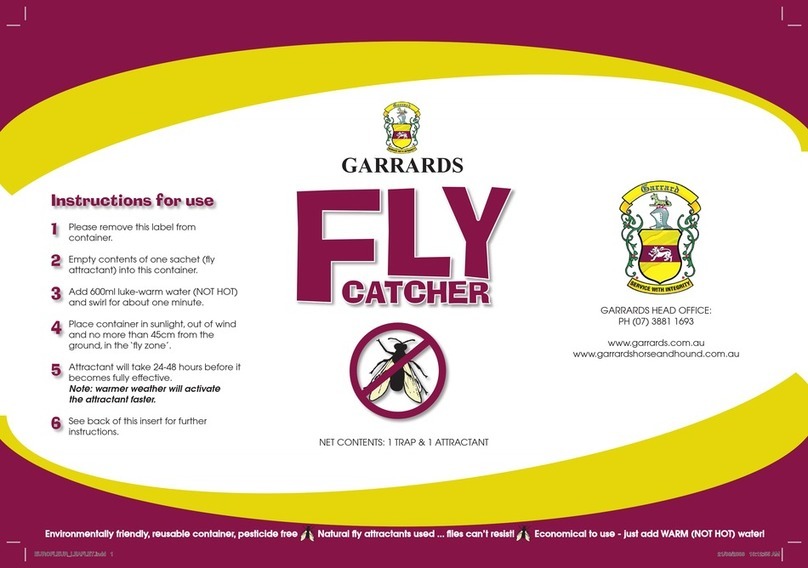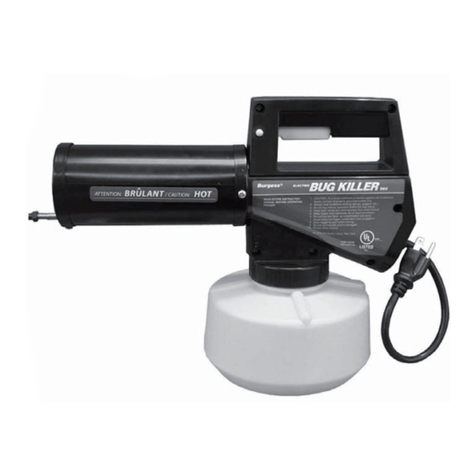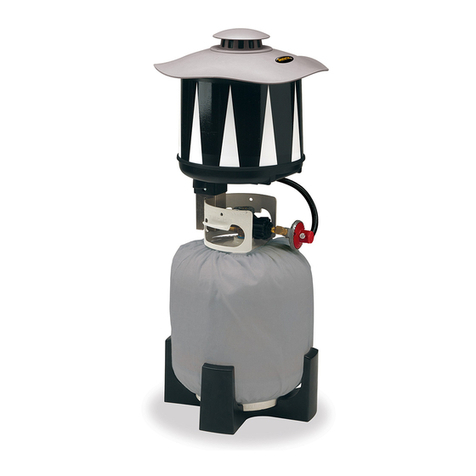
Climbup®Insect Interceptor
Directions for Use
1. Installation in Human Occupied Rooms
•When handling the devices only touch the outer wall of the device.
The inner walls are pre-lubricated with talc which can be easily
rubbed off when handled.
•Place Climbup®devices under each leg of the furniture where people
sleep or rest (beds, sofas, armchairs etc.) so that the leg rests within
the center well of the device (See fig #1). In order to avoid injury, be
sure to use proper lifting techniques and do not lift any objects that
too heavy for you to lift properly.
•Eliminate all other pathways for bugs to access furniture. “Bridges”
for bed bugs to travel on will be created if the furniture is touching a
wall or another object, or anything is hanging off of the furniture onto
the floor. For example, all sheets and comforters should always be
tucked in, and no items should be allowed hang down and touch the
floor. All electric cords should be disconnected between bed and wall.
Any items on the furniture that are touching the floor or wall will
provide bed bugs a “bridge” to access the furniture bypass the
Climbup® devices. It is important that the only avenue onto the
furniture is via the legs that are contained within the Climbup® insect
interceptor.
•Periodically observe the Climbup® devices for bed bugs. Bed bugs
approaching bed from room will be in the outer pitfall ring. Bed bugs
climbing down from bed will be found in center well. Remove bed
bugs from device by wiping out with cotton ball with a small quantity
of talc and immediately place cotton ball in sealed plastic bag for
disposal.
•Check the Climbup® devices to make sure that they have not become
compromised in any way.
Examples include but are not limited to:
a. Checking for the presence of debris or other items present in the
wells that may provide a method for the bugs to escape the wells.
b. Checking to see if the talcum powder has rubbed off or has been
covered in dust.
c. Checking to see if furniture legs have broken the plastic floor of
the inner well
•The monitors should be left in place for a minimum of 21 days to
provide the best opportunity to intercept bed bugs as they move
around your home. Ideally, the monitors should be left in place
indefinitely so that they are continually monitoring for bed bugs.
2. Single Night Installation in Vacant Rooms
•When handling the devices only touch the outer wall of the device.
The inner walls are pre-lubricated with talc which can be easily
rubbed off when handled.
•Place Climbup®device on floor of vacant room. Place in center well
an insulated and capped cup containing sufficient dry ice to continue
sublimation of gaseous CO2 overnight (Fig. 2). Sufficient dry ice is
confirmed by the residual presence of a small piece of dry ice in the
container the next morning. Approximately 20 to 30 oz. of dry ice
will be needed.
•Observe the Climbup® device for bed bugs in the morning. Remove
bed bugs from device by wiping out with cotton ball with a small
quantity of talc and immediately place cotton ball in sealed plastic
bag for disposal.
•Repeat 7 days later. The dry ice technique will only inform you if bed
bugs were blood-seeking on the night of the installation. Bed bugs
only blood-seek every 7 to 10 days.
3. Handling Climbup®Insect Interceptors After Installation:
It may become necessary to handle Climbup® devices from time to time
to remove debris and/or bugs or to discard the devices. Care should be
taken when handling Climbup® insect interceptors after installation as
live bugs may be in, on, or around the devices. When handling devices
be sure to:
•Remove device carefully from beneath the legs of the furniture
•Wash device in soapy water to fully immerse all of the bugs
•Empty soapy water containing bugs into the toilet. The trap may need
to be rinsed more than once to remove all of the bugs. After
emptying soapy water and bugs into the toilet the toilet should be
flushed. Physical debris should not be flushed down toilets but can
be placed into a sealed bag for disposal in an outdoor trash receptacle.
•Fully dry the outer wall as well as the inner walls and wells of the
Climbup® with a paper towel.
•Traps can now be re-lubricated with talcum powder (see directions
for “Re-lubricating Traps”)
4. Re-lubricating Climbup® Insect Interceptor
It may become necessary to re-lubricate the traps if the talc film is
rubbed off, becomes covered with dust or the devices have been emptied
and cleaned. When re-lubricating the devices be sure to:
•Make sure that the all surfaces of the trap are completely dry before
re-applying talcum powder.
•Only touch the outer wall of the trap.
•Talcum powder can be placed in a dish and a cotton ball used to pick
up a small quantity of talc.
•The cotton ball containing the talcum powder should be gently
brushed along the walls of both inner wells so that there is a very thin
dust-like film of talc on the walls.
5. Discarding Climbup® Insect Interceptor After Installation
Care should be exercised when discarding Climbup® devices to avoid
contact with live bugs that are on, in or around the devices.
When discarding devices be sure to:
•Prior to removing the devices you should have plastic bags available
to place the traps in after removing them from floor. It is important
that the bags do not have any rips, tears or holes.
•Wash device in soapy water to remove all bugs. The soapy water can
be dumped into a toilet and flushed. The Climbup® devices are made
of recyclable plastic and once cleaned can be disposed of in a
recycling bin that accepts high density polyethylene (HDPE= #2
recycling symbol). If device is not washed, discard in sealed plastic
bag in outdoor receptacle.
Climbup® is a trademark of Susan McKnight, Inc.
Susan McKnight, Inc.
2924 Walnut Grove Road
Memphis, TN 38111 USA
EPA EST. NO. 85542-TN-001
www.insect-interceptor.com
FIG. 1. Climbup® Insect Interceptor under bed leg.
FIG. 2.Climbup® Insect Interceptor with capped cup of dry ice.
The manufacturer of the Clmbup®insect interceptor is not
responsible for any injury, disease or illness caused, or allegedly
caused by bites, stings or contamination of bed bugs or any other
insects.
Effective February 22, 2010
